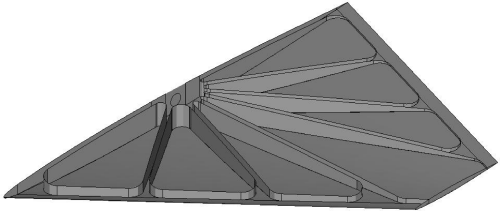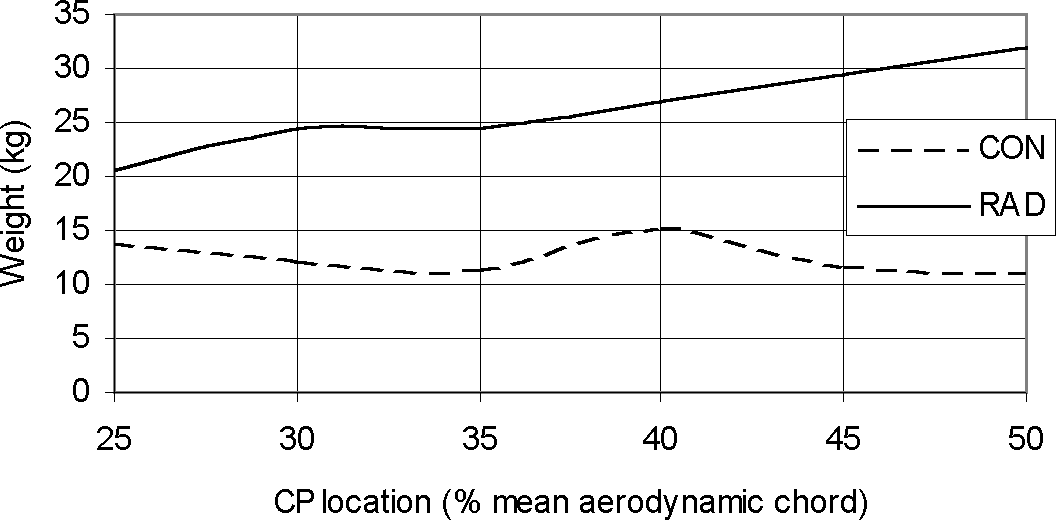
engineering & technology publications
ISSN 1759-3433
PROCEEDINGS OF THE THIRD INTERNATIONAL CONFERENCE ON ENGINEERING COMPUTATIONAL TECHNOLOGY
The Design and Optimisation of a UCAV Wing Manufactured using Advanced Composite Materials
Centre for Advanced Materials, Design & Manufacture Research, Durban Institute of Technology, South Africa
The UCAV-TD is a prototype research vehicle used to investigate the design possibilities associated with the UCAV concept. The vehicle has a tailless configuration and attitude control is effected by the forward canards and all-moving wings. The UCAV-TD is designed to operate at a maximum loading of 14G and at a maximum Mach number of 1.6.
The paper presents the results of a study aimed at investigating the conceptual design for the composite wings of the prototype UCAV-TD aircraft. The work was focussed on identifying an appropriate structural configuration as well as addressing the optimisation of the structural design of the wing when subjected to the typical aerodynamic pressure loading encountered at the upper edge of the operational envelope. The optimisation methodology used is based on the use of simplified material property data, approximation methods and the integration of sequential linear programming with finite element analysis [2]. Two structural design concepts were considered for the wings of the aircraft; the first being a conventional approach using a system of longitudinal ribs and transverse spars as shown in figure 63.1a, and the second being a more unconventional configuration using a radial system of spars as seen in figure 63.1b.
|
The results of the optimisation studies indicate that the multi-spar arrangement of the radial configuration is more efficient in limiting the deflection of the wing, thereby allowing for a reduction in wing skin thickness. The weights of the conventional and radial configurations as a function the location of the centre of pressure is shown in figure 63.2. As can be seen the optimal weight of the wing with conventional spar and rib construction is consistently heavier than for the radial configuration.
- 1
- Strarnes, J. R. and Haftka, R. T., "Preliminary Design of Composite Wings for Buckling, Stress and Displacement Constraints", Journal of Aircraft, 16, 564-570, 1979. doi:10.2514/3.58565
- 2
- Reklaitis, G. V., Ravindran, A. and Ragsdel, K. M., "Engineering Optimisation Methods and Applications", John Wiley and Sons, London, 1983.
purchase the full-text of this paper (price £20)
go to the previous paper
go to the next paper
return to the table of contents
return to the book description
purchase this book (price £85 +P&P)


